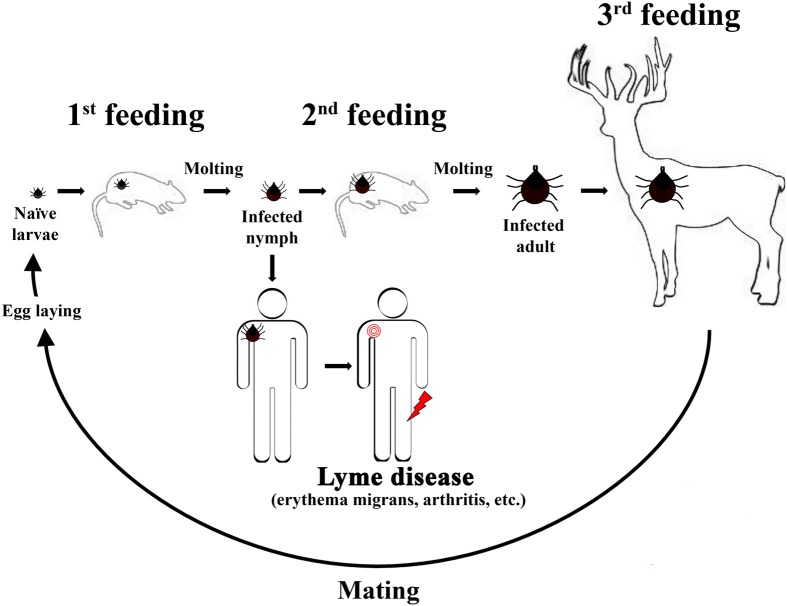Figure 1.
The usual 2-year enzootic cycle of the Lyme disease spirochete. A naïve Ixodes scapularis larvae will feed on a small rodent near the end of the Summer season or early Fall. The feeding larvae can acquire Bb at this feeding (1st feeding) and remain colonized throughout the molting process, which occurs during the Winter season. For the 2nd feeding, infected nymphs will feed late in the Spring season or early in the Summer season. The infected nymphs transmit Bb to either a small rodent host, which maintains the enzootic cycle in nature, or humans (accidental host). Infected humans develop Lyme disease and may develop erythema migrans (signified by a red bulls eye near the shoulder in the figure shown) shortly after an infected nymph feeds. Typically, if subject to late Lyme manifestations Lyme disease patients develop Lyme arthritis at one or both knee joints (signified by a red lightning bolt near the knee in the figure shown). For the final feeding (3rd feeding), nymphs will molt and emerge as adults to feed on large mammals, such as deer, during the Fall season. Deer are considered incompetent hosts for Bb, but the 3rd feeding is important in the enzootic cycle because female ticks will mate and lay eggs over the Winter season. Naïve larvae will emerge following hatching and the cycle begins anew.

